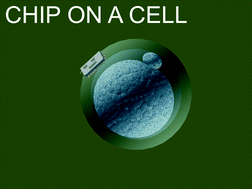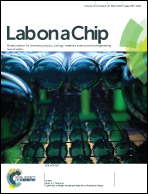Silicon-nanowire based attachment of silicon chips for mouse embryo labelling†
Abstract
The adhesion of small silicon chips to cells has many potential applications as direct interconnection of the cells to the external world can be accomplished. Hence, although some typical applications of silicon nanowires integrated into microsystems are focused on achieving a cell-on-a-chip strategy, we are interested in obtaining chip-on-a-cell systems. This paper reports the design, technological development and characterization of polysilicon barcodes featuring silicon nanowires as nanoscale attachment to identify and track living mouse embryos during their in vitro development. The chips are attached to the outer surface of the Zona Pellucida, the cover that surrounds oocytes and embryos, to avoid the direct contact between the chip and the embryo cell membrane. Two attachment methodologies, rolling and pushpin, which allow two entirely different levels of applied forces to attach the chips to living embryos, are evaluated. The former consists of rolling the mouse embryos over one barcode with the silicon nanowires facing upwards, while in the latter, the barcode is pushed against the embryo with a micropipette. The effect on in vitro embryo development and the retention rate related to the calculated applied forces are stated. Field emission scanning electron microscopy inspection, which allowed high-resolution imaging, also confirms the physical attachment of the nanowires with some of them piercing or wrapped by the Zona Pellucida and revealed extraordinary bent silicon nanowires.


 Please wait while we load your content...
Please wait while we load your content...